DC Comics novels--Batman Read online
Page 2
“How much more time to do you need?” Gordon shifted his weight restlessly. “Not to rush you, but…”
“I’m almost done here.” Batman’s cape swept the floor as he turned away from the file cabinets to take one last look at the baked corpse on the chair. Not for the first time, he wished he could conduct the autopsy himself, but he knew Gordon would provide him with the medical examiner’s report before long. There was just one more thing he had to do, to address the dreadful suspicion lurking at the back of his mind.
“I’m going to need a tissue sample,” he said. “I wouldn’t ask if it wasn’t important.”
“Do what you have to.”
Gordon turned his back for the sake of plausible deniability. Batman removed a razor-sharp scalpel from his belt. Carefully scraping a few centimeters of burned tissue from Morse’s unnaturally flexed forearm, he deposited the sample in a compartment in his left gauntlet. There was a test he urgently needed to conduct, if only for his own peace of mind.
“Done.”
Gordon turned to face him. His shrewd eyes narrowed behind his glasses.
“You look to me like a man with a theory,” he said. “You have any idea who’s behind this?”
Batman couldn’t voice his concerns—not just yet.
“I hope not, Jim,” he replied. “I really do.”
The Batcave had undergone numerous expansions and renovations since he had first selected it as his base of operations. State-of-the-art computers, a garage of specialized vehicles, a machine shop, crime lab, and trophy room occupied several levels of the vast cavern, all connected by sturdy ramps, stairs, and walkways. A sleek black hydrofoil was docked at the shore of a subterranean lake in one of the lower grottos, while hanging stalactites preserved some of the primeval ambience of the natural cavern onto which young Bruce Wayne had first stumbled as a child.
Bats skittered as they returned to their roosts in the upper reaches of the cave, carefully segregated from the more delicate electronics. Despite Alfred Pennyworth’s occasional complaints about the unruly wildlife, Batman was determined not to evict them from their home. They’d been here first, after all, and had served as his inspiration from the very beginning of his crusade. He owed them too much to displace them.
Owls, on the other hand…
“It’s nearly dawn, sir,” Alfred observed. He was tall and lean, impeccable in both his dress and manners. A pencil mustache complimented his apparently timeless features, and he often seemed as much a fixture as the very walls of the manor house above. “Your winged namesakes are retiring for the day. Perhaps you should consider doing the same?”
The butler looked on as Batman sat before an array of sophisticated monitors in the cave’s nerve center. Holographic screens responded to his touch, allowing him to manipulate data more efficiently than a physical keyboard would. Although there was no present need to conceal his identity, Batman kept his cowl on. In the back of his mind, he couldn’t truly let his guard down until he confirmed or debunked the dire suspicions preying on his mind. There could be no sleep until he knew the truth, one way or another.
They watch you at your hearth,
They watch you at your bed…
Batman checked on the status of the tissue sample he’d procured at Morse’s office. The sample was undergoing a comprehensive spectrographic analysis—one that he had customized to search for a very specific substance. The time-consuming procedure tried his patience; there were quicker tests, but they were less reliable, and he had to be certain of the results.
The progress bar on the screen crept forward at a steady, methodical pace that chafed at his usual stoicism. He wanted answers and he wanted them now.
An electronic chime signaled that Gordon had news.
“Finally.” Batman reached out to tap the screen.
In the early days of his crusade he’d had to sneak through air ducts to visit the city morgue, but that was before he’d wired the morgue for remote surveillance. He opened a new window on the central monitor and Jim Gordon peered at him with a slightly quizzical expression on his face. The sterile interior of the facility could be seen behind the commissioner.
Morse’s carbonized remains were stretched out on a stainless-steel examination table beneath the harsh illumination. Sutures sealed the Y-shaped incision on the body’s torso. His blackened skullcap had been put back into place, although it was doubtful that there would be any public viewing of the remains. A closed-casket funeral—or possibly cremation—awaited the deceased.
“Are you there?” the cop asked. The visual transmission was strictly one-way. “Are you reading me?”
“Loud and clear.” Gordon appeared to have the morgue to himself. They had this drill down to a science by now, although Batman winced as he recalled the very first homicide on which he had tested the remote-viewing system. He prayed that history wasn’t repeating itself. “What do you have for me?”
“As we expected, dental records confirm the victim is Herbert Morse,” Gordon reported. “His family has already been notified of the discovery, of course, but I’ll need to call them back just to eliminate any doubt… or false hope.”
Batman didn’t envy Gordon that sad duty, but trusted him to treat Morse’s loved ones with compassion and empathy—just as a much younger Lieutenant Gordon had attempted to console Bruce Wayne on the worst night of the young boy’s life. There hadn’t been many decent cops in Gotham back in those days, but Jim Gordon had been one of them.
“I spared Morse’s wife all the grisly details, at least for now,” Gordon added. “She had no idea why anyone would want to hurt her husband, not that wives always know everything.”
Batman doubted this case involved anything as prosaic as a cheating husband.
“What else did the medical examiner turn up?”
“That Morse was indeed alive when he burned to death. His white blood cell count and the quantity of proteins in the blisters indicate that his flesh and blood were attempting to combat the damage, as opposed to already being inert.” Gordon grimaced at the picture that data painted. “But here’s where it gets weird. According to the ME, Morse was burned from the inside, out. His internal organs were baked much more severely than the outer skin and tissues.”
“I see.”
Batman raised an eyebrow. What Gordon was describing was far from ordinary. Most often, even the most badly charred bodies were comparatively undamaged internally. He had no reason to doubt the ME’s findings, but wanted to verify them.
“Spontaneous combustion?” Gordon suggested.
“Possibly.” Batman’s brain raced. Some kind of exotic microwave weapon, perhaps, or a chemical compound that triggered an exothermic reaction when taken internally. Any number of theories came to mind, demanding further investigation. He recalled that Morse’s head had appeared more badly burned than the rest of the body. “What about his brain?”
“You’re getting warmer, no pun intended.” Gordon grimaced at his own remark. “The brain was charcoal—almost incinerated, as though the fire started inside the victim’s skull, then spread through his body like a fever. The examiner said she’d never seen anything like it. If it wasn’t for the nails and the knife wounds, she’d have been tempted to notify the CDC.”
Like a fever, Batman thought. He filed the observation away in case it proved relevant later. “What about the knife wounds?”
“You called it,” Gordon said. “Despite the fire damage, the skin and bones were still relatively intact. The ME located at least fifty-three separate stab wounds, none of which would have been immediately fatal. He was tortured, all right… in a way we’ve seen before.”
So Gordon recognized the MO too. No surprise there. Gordon was Police Commissioner for a reason. He was a good detective— with a good memory.
“You think it’s them?” Gordon asked. “The Owls?”
“Just a theory,” Batman said, as much to himself as to his ally. It pained him to even concede the possibility. If
only I could dismiss it out of hand.
It had begun months ago, with the mutilated body of a John Doe who had been crucified against the wall of his dingy apartment. He, too, had been repeatedly and expertly stabbed by someone skilled enough to avoid any arteries or major organs. The killer had turned out to be a “Talon,” a master assassin employed by the Court of Owls, an insidious secret society that Batman had once regarded as nothing more than an urban legend—until he was forced to accept the fact that the Court had lurked in Gotham’s shadows even longer than he had.
His own family had been touched by their covert machinations. Nearly a hundred years ago his great-great-grandfather had died at the hands of a Talon. His bones, exhumed at Bruce Wayne’s request, were found to have been punctured almost fifty times.
Not unlike what was done to Herbert Morse.
“Let’s not get ahead of ourselves,” he told Gordon. His gaze darted to the progress bar that was charting the tissue analysis. A flashing icon informed him that the results were ready for his inspection. Batman decided he’d learned all he could from Gordon for the moment. There would be time enough later to download and review the full autopsy report. “Thanks for the information,” he said. “I’ll be in touch.”
Cutting off the transmission, he knew Gordon wouldn’t take offense at his abrupt exit. Small talk had never been essential to their partnership, and beyond that, he wasn’t ready to talk about the Court of Owls. Not just yet, not before he saw the test results.
The test was for electrum, a highly conductive alloy composed of silver and copper. It had been prized for its unique qualities as far back as ancient Egyptian times. Electrum was also favored by the Court of Owls, who employed it in their weapons as well as their arcane elixirs, their emblems, and tokens. Because of this predilection, Batman had developed a means to test for even the tiniest traces of electrum in organic and inorganic samples, no matter how damaged or degraded. If electrum played any part in Morse’s mysterious incineration, the test would tell him.
The answer was only a command away, yet he paused before calling up the results. Such hesitation was uncharacteristic of him. He believed in facing facts head on, not indulging in denial. Yet this hypothesis was… different. More personal.
“Master Bruce?” Alfred prompted him. Engrossed in the details of Morse’s death, and fearful of their implications, Batman had almost forgotten the butler’s presence.
“Just taking a moment, Alfred.”
“I quite understand, sir.”
But stalling wasn’t going to solve Morse’s murder, or allay Batman’s fears. Overcoming his reluctance, he called up the results. The answer appeared on the screen in glowing green letters.
PRESENCE OF ELECTRUM:
CONFIRMED
The temperature in the cave seemed to drop abruptly. There was no denying it anymore.
It’s them, Batman realized, and on instinct the rhyme leapt to mind.
Beware the Court of Owls
That watches all the time.
Ruling Gotham from a shadowed perch
Behind granite and lime.
They watch you at your hearth,
They watch you at your bed;
Speak not a whispered word of them,
Or they’ll send the Talon for your head!
The anonymous sing-song had been part of Gotham’s lore for as long as anybody could remember, sending shivers of delicious fear through generations of the city’s children. But the reality behind the rhyme was even more sinister.
The Court of Owls was a ruthless conspiracy of the rich and powerful, which had long operated from the shadows to shape Gotham’s very structure, accruing ever more wealth and influence with each passing decade. The Court had eyes and ears everywhere, as Batman had discovered the hard way, and highly trained Talons to dispose of their enemies. Herbert Morse hadn’t literally lost his head, as in the rhyme, but there could be no doubt who was responsible for the professor’s ghastly demise.
Batman recalled the claw marks on the outside of the Arts Building, leading up to the roof.
No, he corrected himself. Not claws.
Talons.
He took no satisfaction in his discovery. To the contrary, his heart sank at the damning test results. His history with the Court was more than just personal—they troubled him in a way few of his other foes could manage.
As both Batman and Bruce Wayne, he had always thought of Gotham as “his” city. His family’s long tradition of civic duty meant that the history of Gotham and the Wayne bloodline were inextricably bound together, for better or for worse. Gotham was his legacy, its welfare his responsibility, so discovering that the Court of Owls had been pulling the strings all along, right beneath his nose, had shaken him deeply, particularly after he had uncovered the Owls’ ancient vendetta against the Wayne family.
The Waynes had been among the founders of Gotham. They had made their fortune and had always given back to the city as philanthropists, reformers, and patrons of the arts. Seeking to improve the lives of everyone, both rich and poor, their efforts had been tireless. Gotham’s very skyline had been crafted by the late Alan Wayne, one of the foremost architects of his day, before the Court of Owls sentenced him to death back in 1922.
Batman had only recently discovered the long-buried truth behind his great-great-grandfather’s “accidental” death. Not only had Alan been killed by a Talon, he’d been kidnapped and driven to the point of madness in an underground labyrinth hidden within Gotham’s very foundations.
He suppressed a shudder. He knew exactly what Alan Wayne had endured decades ago. Like his doomed ancestor, Batman had spent more than a week trapped in the same labyrinth. He had been starved, drugged, and physically and psychologically abused before he had finally done what no other man or woman had done before—found a way out of the maze. Yet he had not escaped unscathed.
That had been months ago, but he would be lying to himself if he pretended that he had put the ordeal entirely behind him. Owls were the natural predators of bats, and the Court had come closer to breaking him than any maniac or mobster. They had even launched a direct assault on Wayne Manor and the Batcave, although Batman and his allies had managed to repel it. They took the fight back to the Court, thwarting their attempt to seize total control of the city.
The Owls had been laying low ever since, but he had always known that they would creep from their hidden nests once more. They had been the secret lords and ladies of Gotham for generations. They weren’t going to surrender their grip on the city after just a few temporary reverses.
“Damn it,” Batman muttered. “Damn them.”
“If only it were that easy.” Alfred peered over his shoulder. He knew full well what the test results signified. “But true justice seldom is.”
Batman turned and found the butler’s expression notably somber. The two men shared a common antipathy toward the Court of Owls. Although they had never confirmed it, there was good reason to suspect that the Court had been behind the death of Alfred’s father, Jarvis Pennyworth, as well. Batman’s frown deepened. At times it seemed as if the Owls had infested every part of their lives, past and present, without him ever knowing.
“If I may ask, sir,” Alfred said gravely, “what are you going to do now?”
Batman already knew the answer to that question, owls or no owls.
“My job.”
After a few hours of restless sleep, interrupted by nightmares that could not be dispelled by even the most reliable lucid-dreaming techniques, Bruce Wayne got down to work, making a determined effort to push his personal apprehensions aside.
Bruce was dressed casually in everyday attire as he resumed his place at the cave’s nerve center. He sipped absent-mindedly at a high-energy protein drink Alfred had pressed upon him, his face lit by the glow of the computer screens and the floating holographic control panels. Even without a cowl, his celebrated good looks wore a mask of intense concentration.
Approach this like any othe
r homicide, he thought. Who, what, why, and how.
He already had a pretty good idea who had sentenced Herbert Morse to death, and who had carried out the killing, but what about the “why?” The Court of Owls was relentless when it came to guarding their secrets. Had Morse stumbled onto something the Court did not want unearthed?
An advanced search engine of his own design turned up links to Morse’s most recent publications and lectures, most of which reflected a focus on the influence of Themiscyrian iconography on post-War depictions of classical themes. A quick review of the material found nothing the Court of Owls might want to keep under wraps. At first glance, Morse’s work hardly warranted a visit from a Talon.
But what about his students’ work?
Bruce recalled the files in Morse’s office. Fortunately, the Wayne Foundation had paid to upgrade the university’s computer servers and networks, which meant he had a private backdoor into the systems.
Always suspected that would come in handy, he thought. “Computer, call up all Gotham University students currently enrolled in classes taught by Professor Herbert Morse, deceased.”
The computer responded to his voiced command. “Running…”
It was possible, of course, that the murder involved a former student, but Bruce had to start somewhere. He could always expand the search later, if necessary. As it was, a daunting list of names scrolled down the central screen. Running a cross-reference, he didn’t identify any names known to be associated with the Court of Owls, either as victims or heirs to the Court’s sinister legacy. He looked for a way to narrow the parameters.
“Highlight surnames beginning with letters K through N.”
“Running.”
The list shortened to a more workable number.
“That’s more like it,” he said. “Cross-reference selected names against campus security and medical records for the last six months.”

 Q-Space
Q-Space Godzilla - the Official Movie Novelization
Godzilla - the Official Movie Novelization War for the Planet of the Apes: Official Movie Novelization
War for the Planet of the Apes: Official Movie Novelization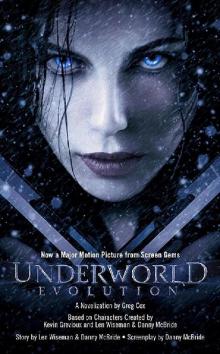 Underworld: Evolution
Underworld: Evolution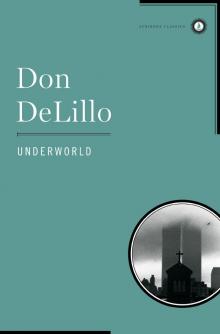 Underworld
Underworld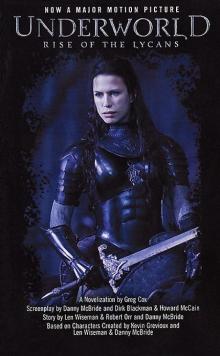 Rise of the Lycans
Rise of the Lycans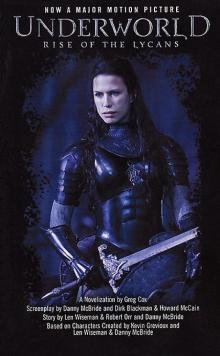 04 - Rise of the Lycans
04 - Rise of the Lycans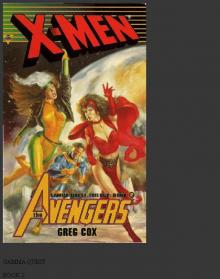 X-Men and the Avengers: Search and Rescue
X-Men and the Avengers: Search and Rescue Child of Two Worlds
Child of Two Worlds Welcome to Promise City
Welcome to Promise City The Librarians and the Mother Goose Chase
The Librarians and the Mother Goose Chase Dragon's Honor
Dragon's Honor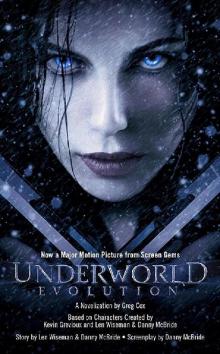 03 - Evolution
03 - Evolution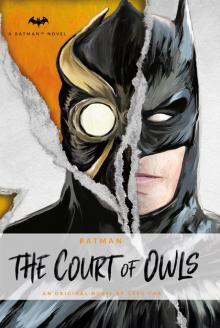 DC Comics novels--Batman
DC Comics novels--Batman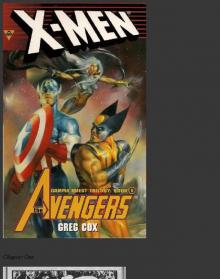 X-Men and the Avengers: Lost and Found
X-Men and the Avengers: Lost and Found Foul Deeds Will Rise
Foul Deeds Will Rise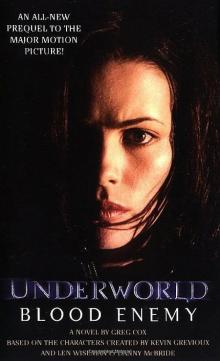 02 - Blood Enemy
02 - Blood Enemy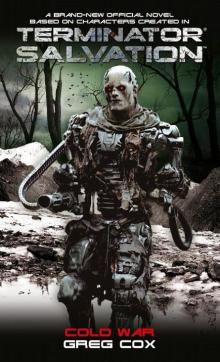 Terminator Salvation: Cold War
Terminator Salvation: Cold War The Weight of Worlds
The Weight of Worlds The Antares Maelstrom
The Antares Maelstrom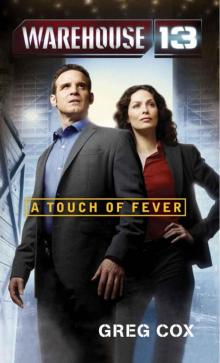 Warehouse 13: A Touch of Fever
Warehouse 13: A Touch of Fever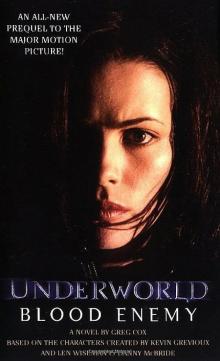 Underworld: Blood Enemy
Underworld: Blood Enemy The Rise and Fall of Khan Noonien Singh
The Rise and Fall of Khan Noonien Singh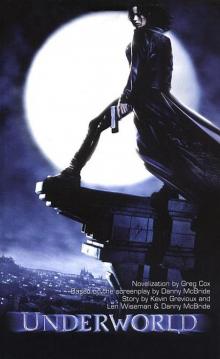 01 - Underworld
01 - Underworld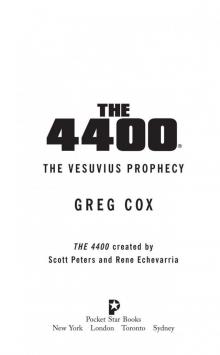 The 4400- the Vesuvius Prophecy
The 4400- the Vesuvius Prophecy Assignment: Eternity
Assignment: Eternity The Eugenics Wars, Vol. 2: The Rise and Fall of Khan Noonien Singh
The Eugenics Wars, Vol. 2: The Rise and Fall of Khan Noonien Singh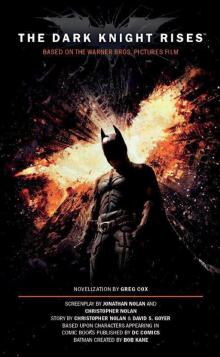 The Dark Knight Rises: The Official Novelization
The Dark Knight Rises: The Official Novelization The Bestseller Job
The Bestseller Job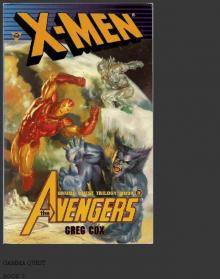 X-Men and the Avengers: Friend or Foe?
X-Men and the Avengers: Friend or Foe?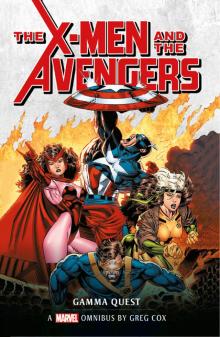 Marvel Classic Novels--X-Men and the Avengers
Marvel Classic Novels--X-Men and the Avengers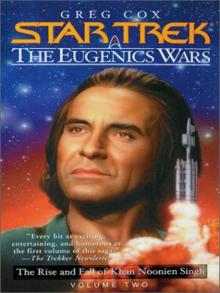 STAR TREK: TOS - The Eugenics Wars, Volume Two
STAR TREK: TOS - The Eugenics Wars, Volume Two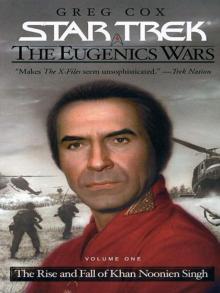 STAR TREK: TOS - The Eugenics Wars, Volume One
STAR TREK: TOS - The Eugenics Wars, Volume One The Black Shore
The Black Shore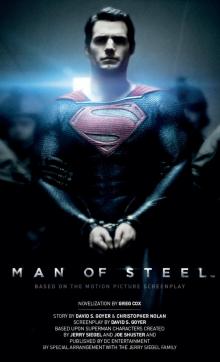 Man of Steel: The Official Movie Novelization
Man of Steel: The Official Movie Novelization Loose ends r-1
Loose ends r-1 Legacies
Legacies The Eugenics Wars, Volume Two
The Eugenics Wars, Volume Two Star Trek: The Original Series - 148 - The Weight of Worlds
Star Trek: The Original Series - 148 - The Weight of Worlds Star Trek: The Original Series: The Rings of Time
Star Trek: The Original Series: The Rings of Time Godzilla--The Official Movie Novelization
Godzilla--The Official Movie Novelization Star Trek: The Original Series - 160 - Foul Deeds Will Rise
Star Trek: The Original Series - 160 - Foul Deeds Will Rise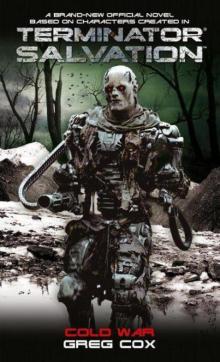 Terminator Salvation: Cold War ts-3
Terminator Salvation: Cold War ts-3 Star Trek: The Original Series: Miasma
Star Trek: The Original Series: Miasma Star Trek: The Original Series: No Time Like the Past
Star Trek: The Original Series: No Time Like the Past Child of Two Worlds (Star Trek: The Original Series)
Child of Two Worlds (Star Trek: The Original Series) THE 4400® WELCOME TO PROMISE CITY
THE 4400® WELCOME TO PROMISE CITY Star Trek: The Original Series: The Rings of Time (star trek: the original series)
Star Trek: The Original Series: The Rings of Time (star trek: the original series) To Reign in Hell: The Exile of Khan Noonien Singh
To Reign in Hell: The Exile of Khan Noonien Singh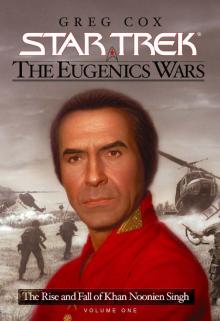 Star Trek: The Eugenics War, Vol. 1
Star Trek: The Eugenics War, Vol. 1 The Q Continuum
The Q Continuum